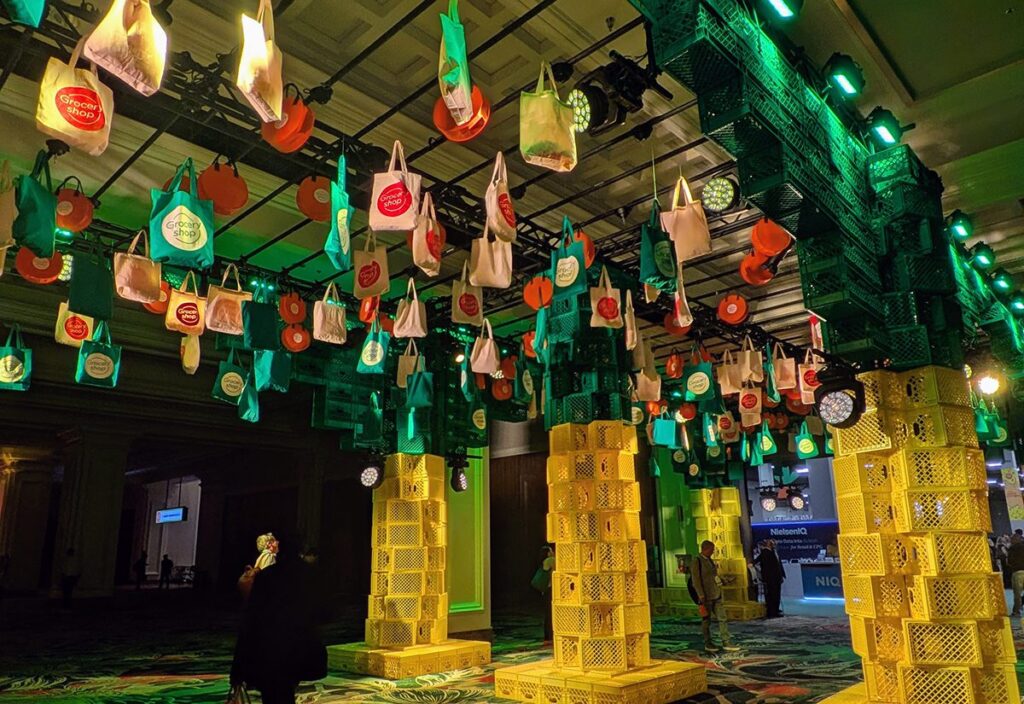“Free, take one.” Who doesn’t love those freebies picked up at the grocery store, event or in the mail? But if marketers don’t properly educate consumers about such samples, those items aren’t free — they’re worthless.
According to Schaumburg, IL-based PromoWorks, spending by marketers on sampling programs increased more than 20% in 2004. But not all such programs yield positive ROI for their brands. The key is using samples to convey the benefits, attributes and value of the product, says Mike Kent, PromoWorks president.
“Sampling programs are turning more into sales programs,” Kent says. “The handouts, samples and coupons create a consumer excitement from the brand standpoint. But retailers and manufacturers are looking at the ROI.” Kent says the new trend in sampling is to use spokesmodels and demonstrators as salespeople, not just distributors.
Though brands want clear-cut statistics to determine ROI from a sampling event, agencies that specialize in teen and college markets, such as Boston-based AMP, say clients don’t mind less-than-accurate results. That’s why Spring Break is a hot property for brands looking to test their products and services to the impressionable 18-25 age group.
“It’s hard to track the results because Spring Break has a viral aspect,” says John Costello, VP-sponsorship and event sales for AMP. “Students will go back to campus and tell their friends all about their experience, and that will spread.”
Costello says brand marketers are learning that sampling at Spring Break is also why many brands choose to target such sites instead of running mobile tours: “Students from across the country bring product info back to school, relaying the same message at a fraction of the cost of a mobile tour,” he says.
This is also why brand managers are targeting high schools and colleges, or places off-campus where those students hang out, to give out samples.
“Sixty-five percent of kids go on to buy a product that is sampled to them,” adds Derek White, executive VP of media/marketing business Alloy and general manager of 360 Youth, New York. “And brand managers know this.”
Even non-traditional brands are warming up to sampling. In February, during the NBA’s All-Star Weekend, McDonald’s used the discipline as part of a nationwide in-store, four-day attempt to boost sales of its Chicken Selects strips. In Denver, where the game was held, Denver Nuggets star Carmello Anthony and basketball Hall-of-Famer Bill Walton handed out samples in that city’s locations. Chicago-based GolinHarris handled.
And Meow Mix found a new way to spread the word about its Wet Pouches, with the Meow Mix Café, a 3,500 square-foot pop-up store on 5th Avenue and 42nd Street in Manhattan. In addition to giving out 14,000 Wet Pouches in a 12-day period, the location offered interactive games for both cats and owners.
For retail sampling, PromoWorks last month rolled out the Proven Sales Performer initiative. The technology tracks and measures individual demonstrator sales performance rather than just attendance. It tracks performance against key measures such as sales, distribution and on-target execution to ensure only proven performers are assigned to the marketers’ projects.
Though various factors (location and type of sampling) are taken into consideration, PromoWorks said PSP makes demonstrators do more than just hand out samplers.
In addition to education, couponing has become a trend tied to sampling events, whether the sampling event is in a retail environment or an off-site location, such as a mobile tour or a festival. Or at a ballgame.
In 2004, PromoWorks held a successful Mega-Sampling Event at Wrigley Field. The program, which will be done three times during the 2005 season, combined a Chicago Cubs game with mobile and stationary product sampling, scratch-and-win Cubs limited edition collector cards for fans as they entered the gates, as well as a Chicago retailer tie-in. Sampling and prize sponsors included Dentyne, Fisher Nuts, Hershey’s, Kellogg’s, Ricola, Rolaids and convenience retailer White Hen.
Kent says White Hen sampled 30,000 2-1/4 ounce bags of its gourmet coffees, which brew a 12-cup pot of java. An on-pack coupon, designed to lift green salad sales in-store, drew a 1% redemption rate, which Kent says is high for c-stores. The overall redemption rate for coupons is 15-20%, Kent notes.
SNAPSHOT 2004
Total spend in 2004: estimated $1.8 billion, up nearly 20% over prior year
Tracking tools key for evaluating ROI
Retail still primary for distribution, but unexpected locales increasingly popular



